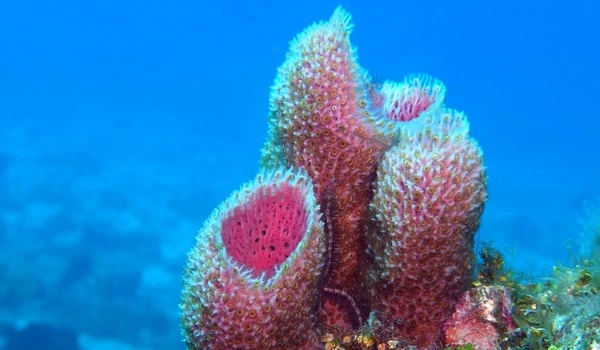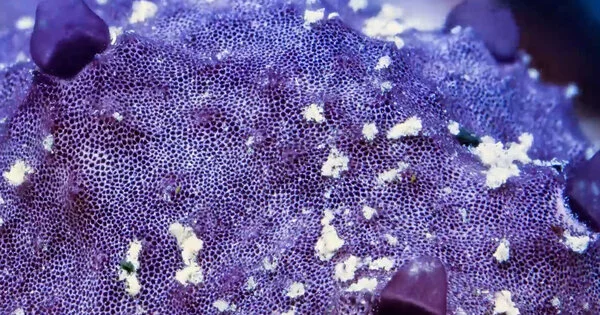When first harvested, all sponges are a dark brown color. Only after processing do sponges acquire the brown or light tan color that most consumers are accustomed to. Sea sponge processing for use is a multi-step process that begins on the boats immediately after the sponges are harvested. The procedure begins by removing all unwanted tissue and debris from the sponge.
Say “gesundheit!” the next time you spot a sea sponge. Some sponges “sneeze” on a regular basis to remove debris from their porous bodies. Sponge feeders draw in water through inlet pores called ostia and strain it for nutrients through an internal canal system. However, there are some inedible particles in the water, such as sediment.
A Caribbean tube sponge (Aplysina archeri) uses mucus to trap and sneeze out unwanted particles to keep them from clogging their outer pores. Niklas Kornder, a marine biologist at the University of Amsterdam, and colleagues published their findings online in Current Biology. Surprisingly, the team discovered that the sponge expels snot through the same pores that it absorbs water.
Most sponges sneeze, so the counterflow technique is likely used by more than just A. archeri. The researchers also observed similar behavior in an Indo-Pacific sponge. However, biologists will need to dig deeper to determine how widespread the mechanism is. It’s also unknown what the mucus is or how it moves backward through pores.
Sally Leys
Sally Leys, an evolutionary biologist at the University of Alberta in Edmonton, Canada, describes it as “like someone with a runny nose. It’s constantly streaming, but it’s flowing in the opposite direction of the in-current.”
Researchers knew sponges used “sneezing” contractions to move water through their bodies in a one-way flow. Water typically enters through numerous ostia and exits through the osculum, a hole near the sponge’s top.
But when the team captured time-lapse video of A. archeri, it saw tiny specks of mucus exiting from the ostia, moving against the flow of incoming water. Sneezelike contractions appeared to expel and move the specks along a “mucus highway” across the surface of the sponge to points where they collected in stringy, gooey clumps. Unlike an explosive human sneeze, the sponges slowly and continuously secreted debris-laden mucus from their ostia, with one contraction taking between 20 and 50 minutes, the study finds.

Other sea critters feast on these ocean boogers, like brittle stars and small crustaceans. Scientists view sponges primarily as habitat builders, but the mucus buffet shows they also perform an important function as food providers, says Amanda Kahn, a marine biologist at Moss Landing Marine Labs in California who was not involved with this work.
“There’s a lot to be said for a study that takes its time and looks,” Kahn says. “They let the animals demonstrate what was going on.”
According to Leys, most sponges sneeze, so the counterflow technique is likely used by more than just A. archeri. The researchers also observed similar behavior in an Indo-Pacific sponge (Chelonaplysilla sp). However, biologists will need to dig deeper to determine how widespread the mechanism is. It’s also unknown what the mucus is or how it moves backward through pores.
Sea sponges are cleaned in a multi-step procedure. When living tissue is removed from the water, it begins to degrade. The sponges are wrapped in wet burlap and left on the deck for several days, where the heat of the sun and the dampness of the burlap aid in the removal of non-skeletal tissue; if the outer skin dries out and hardens, the sponges are rendered useless. The sponges are then squeezed, or “paddled,” to remove all of the unwanted tissue, leaving only the sponge’s skeleton.
















